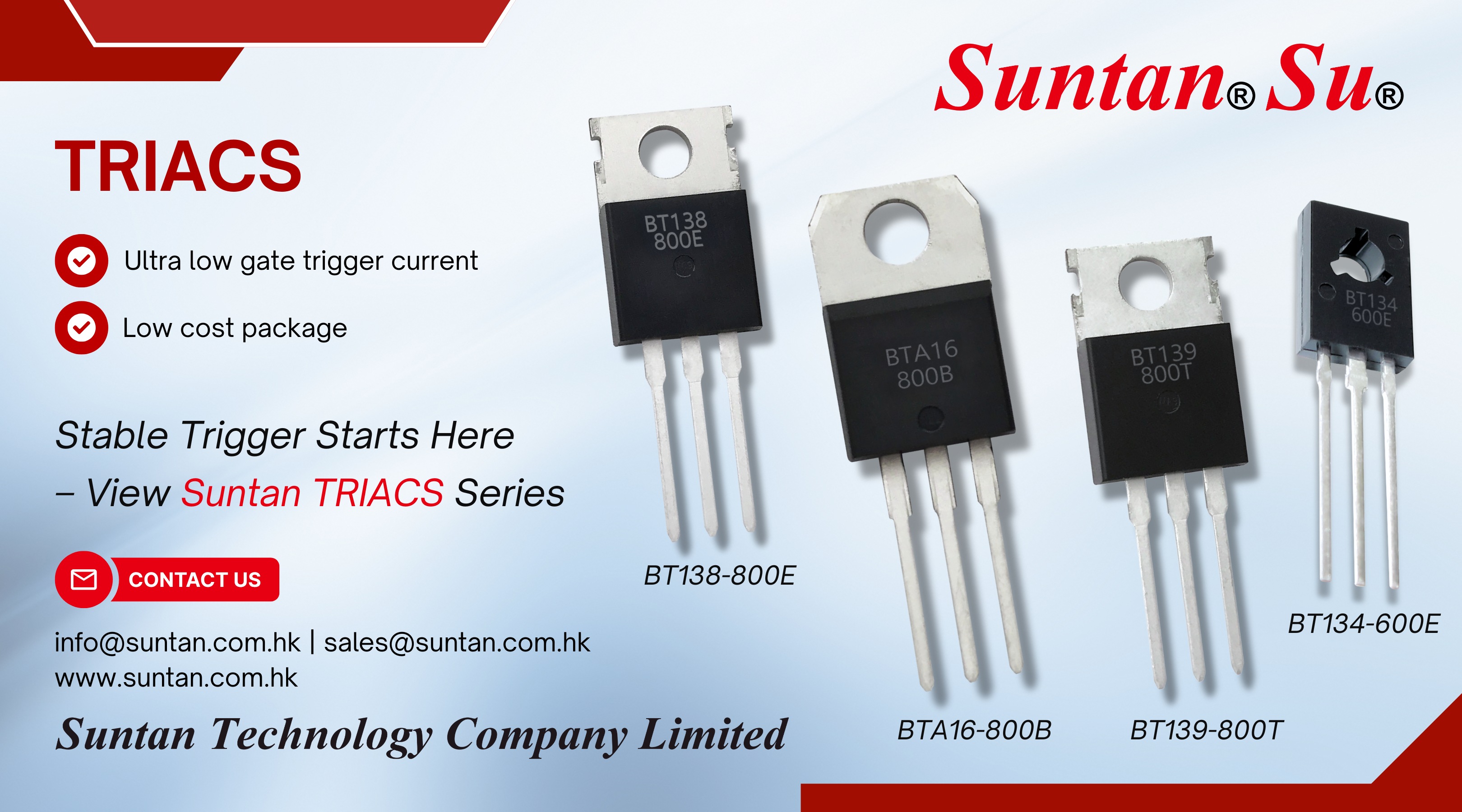
Fix Inconsistent Triggering in AC Circuits – Use Suntan TRIACS for Reliable Switching
Suntan Technology Company Limited
--- All Kinds of Capacitors
In AC power control systems—whether used for lighting, motor regulation, or thermal management—reliable switching is non-negotiable. Yet one of the most persistent issues engineers face is inconsistent TRIAC triggering. Flickering lamps, motors failing to start, or sudden dropouts in heating elements often trace back to an improperly selected TRIAC.
This issue becomes even more prevalent in compact or cost-sensitive designs, where drive current is limited or thermal margins are tight. Fortunately, many of these problems can be avoided with a careful approach to TRIAC selection—and that’s where Suntan’s TRIACS series becomes a practical solution.
Understanding the Root of Trigger Instability
Triggering instability in AC circuits typically results from a mismatch between TRIAC characteristics and the actual operating conditions. Common causes include:
• Insufficient gate trigger current (IGT) from the driver (e.g., opto-isolators, MCUs)
• Latching current (IL) too high for the actual load current
• Thermal overload or inadequate heat dissipation
• Incorrect package or mounting for the power density required
Symptoms such as light flicker, relay chatter, or motor startup delay often point to these mismatches—not to defective components.
TRIAC Selection Criteria: What to Prioritize
A smarter selection process starts with understanding the control limitations and load demands:
• Low IGT is essential for circuits with limited gate drive (Suntan models offer IGT as low as 5mA)
• Package type matters: TO-126 for compact thermal use, TO-220 for higher current with heatsink support
• Voltage & surge margin must match AC line fluctuations and inrush events
• Current rating should not only match steady-state load but also handle peak transients
When these parameters are aligned, TRIACs perform with consistent triggering, safe conduction, and long-term reliability.
How Suntan TRIACS Help
Suntan’s TRIACS series is designed to address the real-world constraints of AC power designers. With models ranging from 4A to 16A and voltage ratings up to 800V, they offer:
• Low gate trigger current (as low as 5mA) for sensitive drive circuits
• Multiple package options (TO-126 / TO-220 / TO-220F) for design flexibility
• Glass-passivated construction for enhanced thermal and electrical stability
Whether you’re building phase control dimmers, inductive motor controllers, or resistive heating circuits, Suntan TRIACS provide the reliability and adaptability needed to reduce triggering failures.
Model Overview
| Model | Package | Voltage | Current | IGT |
|---|---|---|---|---|
| BT134-600E | TO-126 | 600V | 4A | 5mA |
| BT138-800E | TO-220 | 800V | 12A | 5mA |
| BT139-800T | TO-220 | 800V | 16A | 10mA |
| BTA16-800B | TO-220 | 800V | 16A | 35mA |
Each model is backed by detailed datasheets for thermal performance, dV/dt handling, and surge capability—critical for matching the part to your use case.
Conclusion
AC circuits require more than just the right voltage and current rating—they need the right TRIAC characteristics to trigger consistently and run reliably. By choosing a model that aligns with your application’s gate current, thermal load, and mechanical constraints, you can reduce unexpected behavior and extend system life.
Related Datasheets
⁕ BT134-600E – TO-126, 600V / 4A (Low IGT)
⁕ BT138-800E – TO-220, 800V / 12A
📧 Contact us:
info@suntan.com.hk
sales@suntan.com.hk


